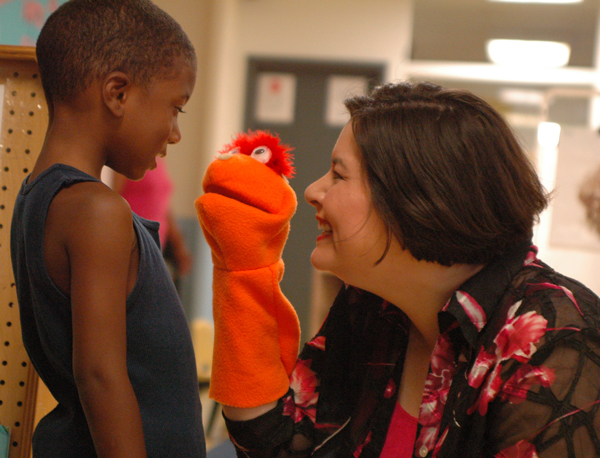Summer Crafts and DIY Projects with an Arts Focus

Jun 03, 2022
The end of school year countdown is on, and soon children will be at home looking for things to do. Wolf Trap has composed a list of arts-integrated projects that parents can do at home with their children to extend learning opportunities for them outside of the classroom. Teachers, you can also try them out while they are working on their lesson plans for the year ahead!
Puppetry
Wolf Trap Master Teaching Artist Penny Russell, a professional puppeteer, loves using puppets in the classroom because of their ability to help children develop empathy and practice social skills, reinforce classroom learning as a “classroom observer.” Puppets also aid teachers in times of transition.
Parents can use puppets with their children in the same way, but they don’t have to break the bank in order to acquire them. In fact, creating them with your child is half the fun! Wolf Trap Teaching Artists offer some easy, budget-friendly solutions for creating puppets:
Paper plates aren’t just for eating! Add some eyes and ears, and you can create a host of characters! Watch Wolf Trap Master Teaching Artist Ingrid Crepeau demonstrate.
Have some paint rolls or dustpans? How about some old gloves? Wolf Trap Master Teaching Artist Ingrid Crepeau shows some creative solutions for puppet-making from simple dollar store finds. You’ll never look at sponges in the same way again.
Stick puppets can be big or they can be small, but all you need is a stick and a ball to form the basis of your puppet. Wolf Trap Master Teaching Artist Ingrid Crepeau shares some of her tips on how you can create and animate objects into life-like characters.
Finger puppets are fun because they can travel with you anywhere! Use a foam or PVC tube, add a ping pong ball, and cover with fabric, and voila! You have yourself a puppet!
Shadow Screens
Shadow puppetry was first introduced in China more than 2000 years ago and is one of the world’s oldest animated techniques. Wolf Trap Master Teaching Artist Joe Pipik demonstrates how to construct a shadow screen, and then how to create and manipulate characters to tell a story. Watch How to Construct a Shadow Screen and How to Use a Shadow Screen.
Interactive Story Experiences
You may not realize it, but you’re about five minutes away from telling any story in the world. Wolf Trap Master Teaching Artist Melissa Richardson shows how to create your own storytelling kit using small toys, scarves, and blocks from around the house. Missing something? Richardson demonstrates how families and educators can adapt objects to create characters or storytelling elements in unexpected ways.
Creating a Story Box/“Coffee Can Theater” Dramatization
Parents can pair all of the aforementioned experiences with literature to build on the experience for their children. “Creating a Story Box” is a variation of “Coffee Can Theater,” in which you create a story box based on a specific children’s book. Wolf Trap Master Teaching Artist Amanda Whiteman demonstrates how to create sensory experiences through the use of creative containers, engaging objects, and music.
Looking for even more ideas? Find more arts-integrated strategies from Wolf Trap Institute for Early Learning Through the Arts at education.wolftrap.org.
Recommended Posts

Jamming with Jules: Music for Kids of All Ages
Jul 21, 2025 - Education, Experience, For Kids, Institute, Summer


